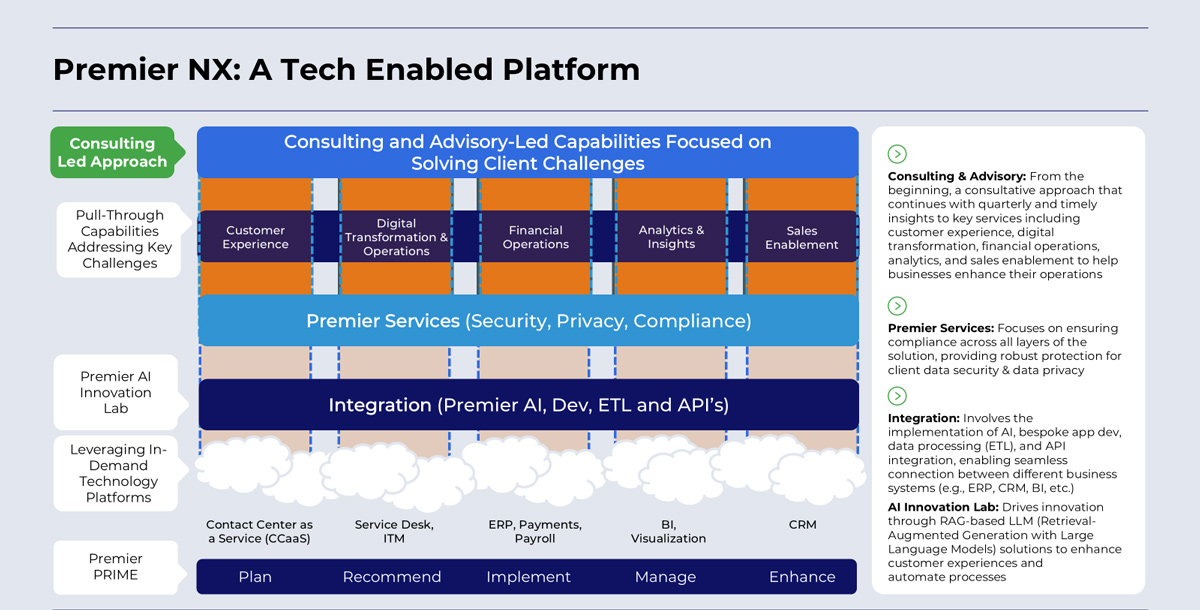It’s 2025, AI is no longer an experimental technology reserved for enterprises—it’s the foundation for how businesses operate, compete, and grow.
From automated customer service to predictive analytics and generative content creation, AI has moved from promise to practice. But with that progress comes something less discussed: confusion.
The State of AI Today: Adoption Is Up, Clarity Is Down
According to recent reports:
- 78% of companies use AI in at least one business function.1
- 71% have adopted generative AI tools—up from 65% in just a year.1
- Nearly half (49%) of tech leaders say AI is now fully embedded in their core strategy.2
- The AI market has surpassed $184 billion, with a projected 35.9% CAGR through 2030.3
Yet, despite the surge in adoption, many organizations—especially mid-market companies—are hitting a wall. Not because they doubt AI’s value, but because the path forward isn’t always obvious.
Too Many Tools, Too Little Guidance
The AI ecosystem has exploded with platforms, models, vendors, and “solutions”—each promising faster, smarter, cheaper outcomes. But for mid-sized organizations without in-house data science teams or endless budgets, this abundance has created friction:
- Which tools actually integrate with existing systems?
- How do we avoid vendor lock-in or shadow IT?
- What’s the ROI on these implementations—and who’s measuring it?
- Who’s responsible for AI governance, compliance, and ethical use?
In short, AI has become a business imperative—but making the right moves feels riskier than ever.
The New Talent Currency: AI Skills
Even with the right strategy, implementation depends on people. And here too, the landscape is shifting.
- AI skills now command a 23% wage premium, outpacing even advanced degrees.4
- Employers increasingly favor practical AI fluency over formal credentials.5
- Job postings for AI-related roles—machine learning, NLP, and prompt engineering—are surging.5
For businesses, this means that access to AI expertise—whether in-house or via strategic partners—can be the difference between lagging behind or leaping forward.
Where Mid-Market Leaders Are Getting Stuck
Unlike enterprise peers, mid-sized companies often lack the internal resources to test, vet, and scale AI safely. But they also can’t afford to wait.
The most common blockers we’ve seen include:
- Unclear prioritization: What should be automated first? Where’s the biggest impact?
- Vendor fatigue: Too many platforms, all offerings, making the same promises.
- Inflexible models: Solutions that don’t adapt to business complexity or growth.
- Vendor viability: Which vendors will survive, which will be eaten up, and which will disappear? Who will take on this risk?
- Missing change management: Teams aren’t ready—or trained—for what’s coming.
The challenge isn’t knowing that AI matters. It’s knowing how to move forward with confidence.
What Mid-Market Companies Actually Need from AI in 2025
After working with dozens of mid-sized organizations across industries, a pattern emerges. The ones that succeed with AI don’t chase hype—they follow a few key principles:
1. Start with Strategy, Not Tech
You don’t need another tool—you need a roadmap. AI should align with core business goals, rather than operating in a silo.
2. Balance Automation with Human Judgment
“Human-in-the-Loop” isn’t just a buzzword—it’s essential for customer experience, compliance, and trust.
3. Invest in AI Literacy Across Teams
Tools are only as powerful as the people using them. Training, enablement, and cross-functional understanding are critical.
4. Think in Systems, Not Silos
The best AI strategies treat data, workflows, and platforms as connected, not compartmentalized.
A Strategic Way Forward: What the Right Partner Looks Like
This is where partners come in. Not vendors. Not black-box solutions. True partners who can guide your AI journey from strategy to execution—with transparency, adaptability, and measurable results.
What to Look For:
- A structured framework that brings clarity across planning, implementation, and enhancement
- Interoperability, so you’re not boxed into one vendor or platform – who is willing to manage the process, regardless of the tech or tool?
- Real innovation, with in-house R&D and prototyping – identify a partner that can help you future-proof against vendor viability, and understands business processes
- Human support, not just automation, because people still power outcomes
Where Premier NX Fits In
At Premier NX, we’ve built our entire platform around solving these exact mid-market challenges. We don’t sell AI—we enable outcomes, backed by strategy, technical depth, and real-world business understanding.
Our layered approach to technology connects five core functional pillars with our PRIME Tech Framework, AI Innovation Lab, and Human-in-the-Loop delivery, providing you with the tools, talent, and guidance to deploy AI with confidence.

We’re the enterprise operating system for mid-market CEOs, and the business co-pilot to guide you and your teams.
Because in an AI-driven future, the companies that win won’t be the ones with the most tools. They’ll be the ones who know how to use them, when, and why—with a trusted partner at their side.
Need clarity in your AI journey?
Let’s talk. Premier NX can help you make AI work for your business today and in the future.


